Océans

Le PNUD rend hommage au Commandant Jacques-Yves Cousteau
Le Programme des Nations Unies pour le Dévelopement (PNUD) a honoré l’oeuvre de Jacques-Yves Cousteau et a annoncé son intention de travailler avec la Cousteau Society pour atteindre l‘Objectif de développement durable 14 (ODD 14), qui vise à «Conserver et utiliser durablement les océans, les mers et les ressources marines pour un développement durable».
Article complet sur le site Web du PNUD: En honneur à la mémoire de Jacques-Yves Cousteau

UNESCO release World Heritage Coral Reefs Assessment
According to UNESCO’s first global scientific assessment of climate change impacts on World Heritage coral reefs, all 29 World Heritage sites which contain coral would cease to exist as functioning coral reef ecosystems by 2100 if our behaviour concerning emissions remains the same.
“The 29 globally significant coral reefs on UNESCO’s World Heritage List are facing existential threats, and their loss would be devastating ecologically and economically” explains Dr. Mechtild Rossler, Director of the World Heritage Centre.
Full article on UNESCO website: Assessment World Heritage Coral Reefs
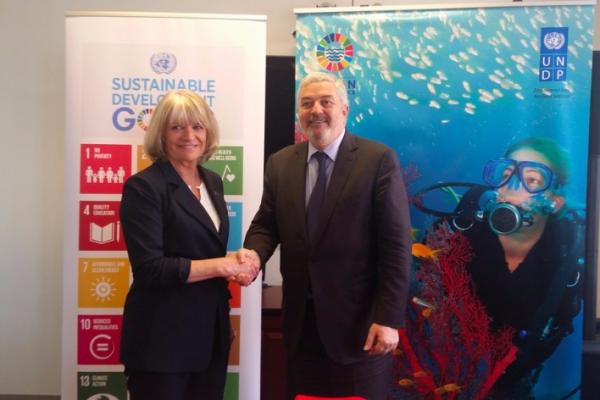
Cousteau and UNDP to restore oceans for sustainable development side by side
UNDP and Cousteau Society have joined hands to protect and restore oceans for sustainable development
The UN Development Programme (UNDP) and the Cousteau Society signed a Memorandum of Understanding on Thursday June 15th in New York. The aim of this UNDP-Cousteau partnership is to undertake a range of ocean-related joint and coordinated activities at the global, regional and national level. UNDP and the Cousteau Society run programmes which share a number of geographic areas such as the Black Sea, Red Sea and the Comoros Islands.
Francine Cousteau, President of the Cousteau Society, signed the agreement on behalf of the Cousteau Society, said, “I thank UNDP and the devoted team for having shown confidence in our capacity to join forces to carry forward the work of Jacques Cousteau in the quest of excellence for the health of our Oceans and for the well-being of people on the water planet. On the eve of the twentieth Anniversary of Captain Cousteau’s passing, it is the most beautiful tribute we can offer to his work and to future generations, I am very enthusiastic and grateful.”
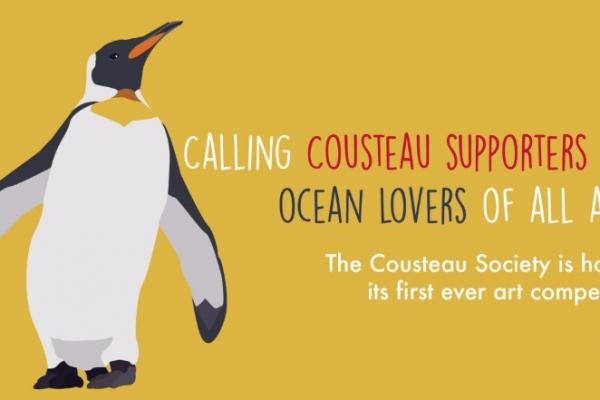
The Cousteau Society is holding its first ever art competition!
Take this opportunity to show off your art skills for the chance to have your artwork featured on the cover of the summer edition of Cousteau Kids!
Springtime is baby time for many in the animal world, and the ocean is full of adorable aquatic infants. We want you to create a picture of your favorite marine animal as a cuddly, squishy, fuzzy, slimy, lovable baby.
The winner will receive:• 10 copies of the magazine with their winning artwork• A feature on our website• A feature in one copy of our direct mail solicitationSelect runners-up will be featured on the inside of the magazine and given two free copies.
Send submissions unfolded in a sturdy 9×12 envelope to:4 East 27th StreetP.O. Box 20321New York, NY 10001
Not subscribed to Cousteau Kids yet? Sign up here to get started on your underwater adventure!
Please be sure to include the artist’s full name and age (if under 18). All artwork needs to be your original imagery. Submissions must be received no later than February 9th, 2016* to be considered. Artwork should be 8.5×11 in size (no lined paper, please).
Good luck and have fun getting creative!
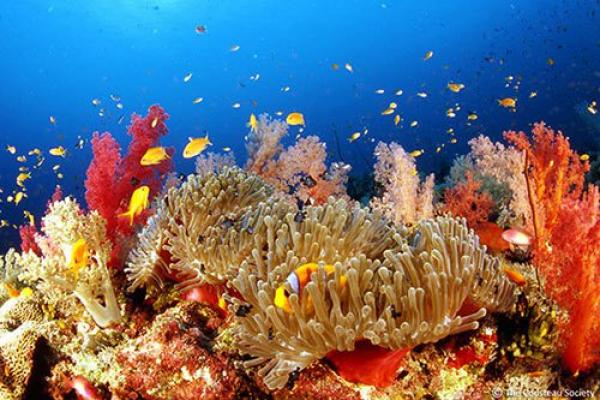
The Cousteau Society in Dubai for the Convention on Biological Diversity
The Cousteau Society, represented by Tarik Chekchak, takes part to an international workshop organized by the Convention on Biological Diversity (CBD), in Dubai from the 20 to the 25 of April. The Cousteau Society goal is to describe and identify with CBD significant marine areas deserving the greatest attention of the United Nations. The workshop focus on the north-west indian ocean région and adjacent gulf areas, as the Red Sea and the Aden gulf. Dr Dirar Hassan Nasr, representative of Sudan and Tarik Chekchak, feature the importance of the Sudanese coast and the Socotra archipelago (Yemen).
The CBD is one of the three international treaty signed during the Rio Summit in 1992 (Convention on Climate Change and Convention to combat desertification). The Conference of the Parties, its governing body, advances implementation through the decisions adopted at its periodic meetings. At the outcome of the tenth meeting in Nagoya, the signatory countries formulate a Strategic Plan for Biodiversity with the purpose of safeguarding biodiversity and enhance its benefits for people. Twenty objectives, so-called the Aichi Biodiversity targets, will have to be achieved by the end of 2020. To make this plan concrete, several regional workshops will be hold to draw up the inventory of ecologically or biologically significant marine areas (EBSAs).
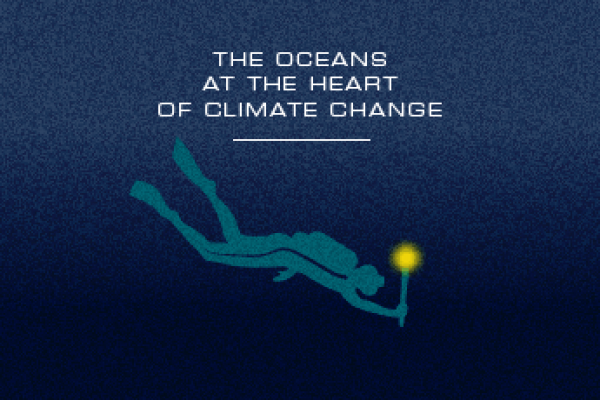
The oceans at the heart of climate change
On the occasion of the 2015 Paris Climate Change Conference, The Cousteau Society will provide you with keys to understance the importance of ocean in climate change. Data visualisations will be available regulary on our website. This month, discover the crucial role of oceans in regulating the excess heat induced by greenhouse gases.
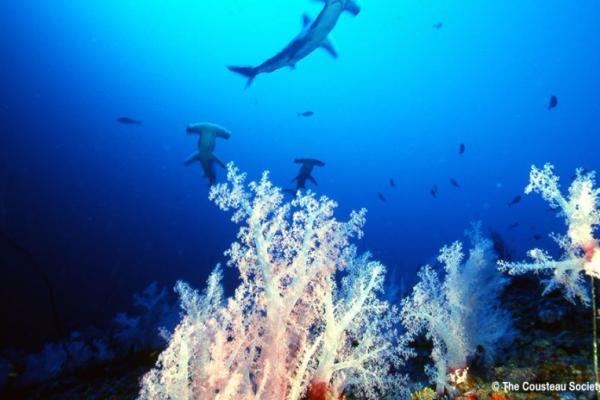
Ecuador seized around 200000 shark fins
Ecuador seized around 200,000 shark fins and arrested three suspected poachers at the country’s main fishing port, the government said on Wednesday. Ecuadorian authorities reported that at least 300,000 sharks were killed by the traffickers. This is in one of the most serious environmental crimes reported in the country in years, despite ecuadorian laws prohibiting shark fishing since 2007.
Shark finning refers to the removal and retention of shark fins while the remainder of the living shark is discarded in the ocean. Coveted in Asia for medicinal uses and as a delicacy, shark fins are among the most expensive seafood products, commonly retailing at US$700 per kg.*
Despite international support for a ban on cutting off fins (100 countries in 2014), many countries continue to practice shark finning. About 30 % of sharks are fished for their fins (this data is difficult to ascertain because of illegal fishing). This practice is considered as the major cause of the global decline in shark numbers. **. Populations have declined by 90 % worldwide and one in three shark species is threatened with extinction ( IUCN – 2003). The Cousteau Society is working towards the resolution of this issue by developing a project to protect shark populations in the Red Sea: Project Sharks and Rays of the Red Sea.
Source :
* Stefania Vannuccini, « Shark utilization, marketing and trade. FAO Fisheries Technical Paper. No. 389. Rome », Fisheries and Aquaculture Department – FAO, 1999** P. Deynat, Requin : entre menaces et espoirs, Apnéa, 2010, p. 46-50.
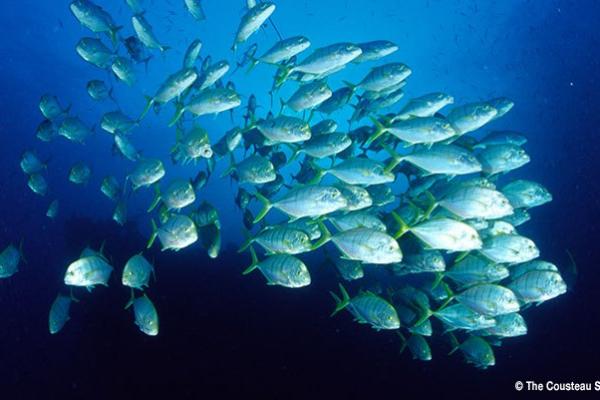
The World Ocean Summit 2015
The third World Ocean Summit will be held in Lisbon, on June 5th 2015. Pierre-Yves Cousteau, IUCN marine program officer, will represent IUCN project. The conference will focus on « the blue economy ». This emerging concept is based on reconciling the notions of economic growth and environmental protection. The global ocean, like the other ecosystems, is regarded as a source of goods and services to manage sustainably.
Much economic activity in the ocean remains based on unsustainable over-exploitation or pollution. A trend that could be countered thanks to the World Ocean Summit initiative. Indeed, during the second instance, the notion of sustainable ocean economy was clarified and the governance frameworks required to enable it was considered. The third summit represents the next step where hundreds of global leaders, business, governments and the international ocean community, will gather and explore realistic solutions. An answer to this question could be outlined : how can we make the transition from a conventional ocean economy to a new ‘blue’ economy?
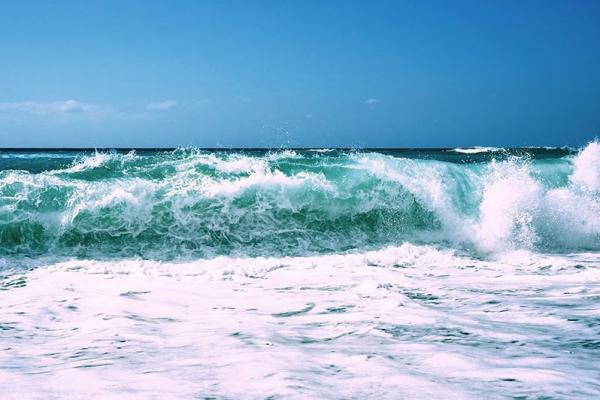
World Oceans Days – UNESCO
In honor of the United Nations World Oceans Day, celebrated each year on June 8th 2015, the Intergovernmental Oceanographic Commission of UNESCO (IOC-UNESCO) will organize a full day dedicated to the ocean and its link to the climate system. This event will bring together scientific, political decision-makers and members of the civil society. Several workshops and plenary sessions are planned focusing on the impacts of climate change on the ocean and its essential role into the phenomenon.
Organized in the lead-up to the 2015 Paris Climate Conference (COP21), this event aims to mobilize several stakeholders working on the topic in order to bring out actions and strategies to mitigate climate change and its socioeconomic impacts. Key recommendations from World Oceans Day will be transmitted to the negotiating parties, experts and observers attending the Bonn Climate Change Conference in June, in preparation of COP21. The messages will underline how crucial an “ambitious” Paris Agreement is to ensure ocean health.
© UNESCO
For more information:UNESCO websiteOcean and Climate Platform
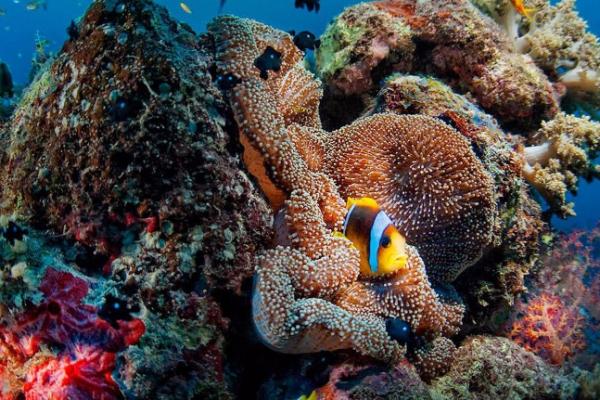
Les choix de COUSTEAU récompensés
COUSTEAU est fière d’avoir contribué au récent classement au Patrimoine Mondial de l’UNESCO d’une vaste zone comprenant deux parcs nationaux marins remarquables, ainsi que le site de Chab Rumi où le commandant Cousteau mena en 1963 sa célèbre expérience de vie sous la mer de Pré-continent II.

Requin baleine et requin-marteau planeur sur la liste rouge
Les deux espèces ont été ajoutées à la liste rouge d’animaux en voie de disparition de l’UICN après que le changement de pression dû à la pêche ait réduit leurs populations de 50% au cours des 75 dernières années.
Les requins baleines et les requins-marteaux planeurs se sont rapprochés de l’extinction suite à leur placement sur la liste rouge des animaux en voie de disparition de l’UICN.
Ils ont été victime de l’augmentation en pression dû à l’activité humaine, notamment l’industrie de la pêche, avec le population de requins baleines (le plus grand poisson du monde) réduit de moitié dans les 75 dernières années.
Jane Smart , la directrice du programme des espèces globales de l’UICN dit : « C’est alarmant de voir des espèces si emblématiques aller tout droit vers la disparition. Les océans et les forêts du monde ne continueront à nous fournir en nourriture et autres biens que si nous préservons leurs capacités à le faire ».
Les requins baleines sont toujours tués par des hélices de bateaux et les flottilles de pêche, surtout en Chine et en Oman. Ils sont également souvent présent dans les bancs de thon et sont par conséquence fréquemment renseignés par les pêcheurs comme des prises accidentelles.

Polluants retrouvés dans les fosses océaniques les plus profondes
« Nous avons tendance à croire que les fosses océaniques sont retirés et préservées , intactes des impacts humains » Mais elles ne le sont pas. Comme l’ont démontré des chercheurs de l’université d’Aberdeen qui sont allés dans ce qui est probablement l’endroit le plus reculé de la planète et ont pourtant trouvé des traces de polluants chimiques dans les créatures qui vivent à des miles sous la surface de l’océan. Les scientifiques ont présenté des preuves de la présence de PCB ainsi que de PBDE (une autre catégorie de produits chimiques toxiques) dans les petits crustacés récoltés dans les profondeurs.
Leur étude à été conduite en 2014, en utilisant des sous marins télécommandés pour échantillonner la Fosse des Mariannes et la Fosse des Kermadec (à proximité de la Nouvelle-Zélande). Ils ont trouvés d’importants niveaux des deux types de produits chimiques dans les corps d’amphipodes (petits crustacés sans coquille) recueillis à des profondeurs situées entre 7,000 et 10,000 mètres sous les vagues. En réalité les niveaux de ces produits chimiques dépassent le niveau de PBDE proche de la surface en Nouvelle-Zélande et les niveaux de PCB étaient même plus importants que ceux retrouvés dans deux des rivières les plus polluées de Chine.
Les PCB sont interdits dans la plupart des pays depuis des décennies et les PBDE , utilisé dans les produits ignifuges, commencent à connaître des restrictions aussi. Les deux types de polluants sont synthétiques et appartiennent à la catégorie des POP (polluants organiques persistants) car ils ont une décomposition lente et difficile. Et , tandis que les endroits les plus profonds de nos océans sont peut-être inaccessibles pour nous, ils sont en fait des sanctuaires pour les polluants du monde. De la même manière que des millions de tonnes de plastique se sont entassées dans le vortex de déchets du Pacifique nord, des plus petits morceaux de plastique coulent jusqu’au fond des océans où ils peuvent être ingéré par la faune marine. Et du fait que ces endroits soient si profonds, toute chose qui y entre fait rarement le chemin inverse.